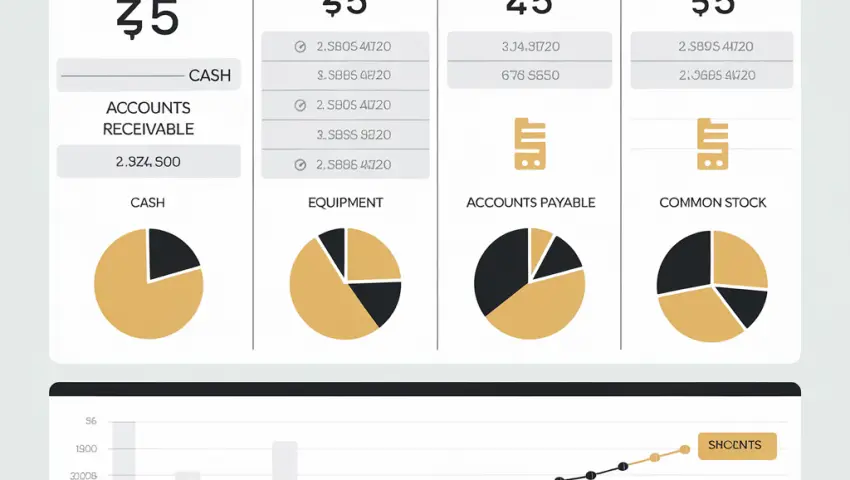
Understanding Time Value of Money: A Practical Guide with Case Scenarios
The Time Value of Money is a useful concept for making everyday financial decisions. Whether assessing investment opportunities, taking out loans, saving for retirement, or managing a business, understanding how time affects the value of money helps you make more informed and effective decisions.
The Time Value of Money (TVM) is a core concept in finance that asserts money today is worth more than the same amount in the future. This is because money can earn interest or generate returns when invested, making its value grow over time. This principle is essential for making sound financial decisions, whether you're investing, taking out a loan, or saving for future goals.
Let’s explore the Time Value of Money through practical examples and case scenarios that highlight its relevance in everyday financial decision-making, without delving too much into complex formulas.
The Concept: Why Money is Worth More Today than Tomorrow
At its core, the Time Value of Money relies on the idea of opportunity cost—the idea that money today has the potential to earn more money. If you have $1,000 today, you can invest it or deposit it into a savings account where it will earn interest. On the other hand, $1,000 you receive next year doesn’t have the same opportunity to grow.
Consider a simple case: If you invest $1,000 today at an interest rate of 5%, after one year, you’ll have earned $50 in interest, making your total $1,050. If you had waited a year to receive the $1,000, you would have missed the opportunity to earn that $50.
Case Scenario 1: Comparing Investment Options
Imagine you have the option to invest in two different opportunities:
Investment A: You invest $1,000 today, and in one year, you will receive $1,100.
- Investment B: You invest $1,000 today, and in one year, you will receive $1,150, but there is a 10% risk that you won’t receive anything at all.
In this case, Investment A is a safer bet, providing you with a guaranteed return of $100, and offering more certainty. Investment B, on the other hand, has the potential for a larger return ($150), but it comes with a risk of nothing at all.
Case Scenario 2: Evaluating a Loan Offer
You are considering two loan offers:
Loan Option 1: You borrow $1,000 today, but you will need to repay $1,100 in one year.
- Loan Option 2: You borrow $1,000 today, and you will need to repay $1,200 in two years.
At first glance, it seems that Loan Option 1 is cheaper because you are only repaying $1,100 after one year. However, the key to understanding TVM is to recognize that the amount you repay in the future (whether it’s one year or two years down the line) is affected by interest rates and inflation.
Loan Option 1 has an interest rate of 10% (because you repay $1,100 for a loan of $1,000). Meanwhile, Loan Option 2 has a higher nominal repayment of $1,200 in two years, but its interest rate is only 9.5% when you adjust for the time factor.
Thus, despite the higher nominal payment in Loan Option 2, the time value of money suggests that Loan Option 1 is actually a better deal because you’re repaying a smaller amount in the future (and sooner), meaning you’re paying less in terms of interest when considering the time value of the loan.

Case Scenario 3: Retirement Planning
Let’s say you’re planning for retirement and need to decide how much to save each month. If you start saving today, your money will grow over time due to interest, investments, or returns on the savings. However, if you wait until later to start saving, you will need to contribute more to reach the same goal.
Let’s imagine the following:
You are 30 years old and want to save for retirement, planning to retire at 65.
- You aim to have $1,000,000 in your retirement account by the time you retire, assuming you earn an average annual return of 7%.
Scenario 1: If you start saving $500 per month today, by the time you retire at 65, you will have accumulated the desired $1,000,000.
Scenario 2: If you delay saving for retirement and only start at age 40, you’ll need to save $1,000 per month to reach the same $1,000,000 goal by age 65.
The key takeaway here is that the earlier you start saving, the less you need to save each month to achieve the same financial goal. This is because your money has more time to compound and grow through the power of time and interest. The earlier you invest, the more time your money has to increase in value, thanks to the time value of money.
Case Scenario 4: Evaluating Cash Flows for a Business
Let’s assume you own a business and are considering two potential projects. Each project will generate cash flows in the future, but the amounts and timing differ. To make the right decision, you need to compare these future cash flows in today's terms (present value).
Project A promises to generate $10,000 in profits each year for the next 5 years.
Project B will generate $12,000 in profits, but only for the next 3 years.
Without using complex formulas, we can assess the time value of these projects in simple terms. If both projects cost the same amount to start, Project A might look more appealing at first because it provides a steady income over a longer period of time.
However, when considering the time value of money, the value of $10,000 in year 5 is less than $10,000 today. Because you’re receiving money further into the future, its actual worth today is lower. As a result, Project B, despite generating less income overall, might be more valuable on a present-value basis because the money comes sooner, and hence has a higher present value.
Time Value of Money in Everyday Decisions
Here are some practical ways TVM can be applied to everyday financial decisions:
- Loan Repayment Planning: When you take out a loan, you need to consider not just the nominal value you owe but also the time factor. Repaying the loan earlier may allow you to save on interest payments because you're paying back money sooner, which reduces the overall amount paid.
- Choosing Between Immediate and Deferred Payments: Imagine you’re offered $500 today or $550 in a year. While the second option gives you more money, the time value of money suggests that the $500 today might be a better option if you could invest it and earn a return. If you invest the $500 at a 10% interest rate, you’d have $550 in a year, exactly matching the future option. However, if you invest at a higher rate, say 12%, you’ll end up with more than $550, making the present $500 more attractive.
- Education Investment: When evaluating the cost of education, it's important to consider how the investment in your education today will affect your future earnings. Even if education is expensive today, the long-term increase in your earning potential due to the higher salary you’ll earn in the future could make it worthwhile.
Conclusion
The Time Value of Money is more than just a financial theory—it’s a practical tool for making everyday financial decisions. Whether you're evaluating investment opportunities, taking out loans, saving for retirement, or running a business, understanding how time impacts the value of money helps ensure that you make more informed and effective choices.
By considering the time value of money, you can maximize the value of your money by earning returns over time, minimize costs by reducing debt sooner, and make smarter decisions regarding future financial obligations. The ability to evaluate the present value and future value of money is a key aspect of personal and business financial management, ensuring that decisions are made with a clear understanding of their long-term impact.
Timo Kavuma
Leave a comment
Your email address will not be published. Required fields are marked *


